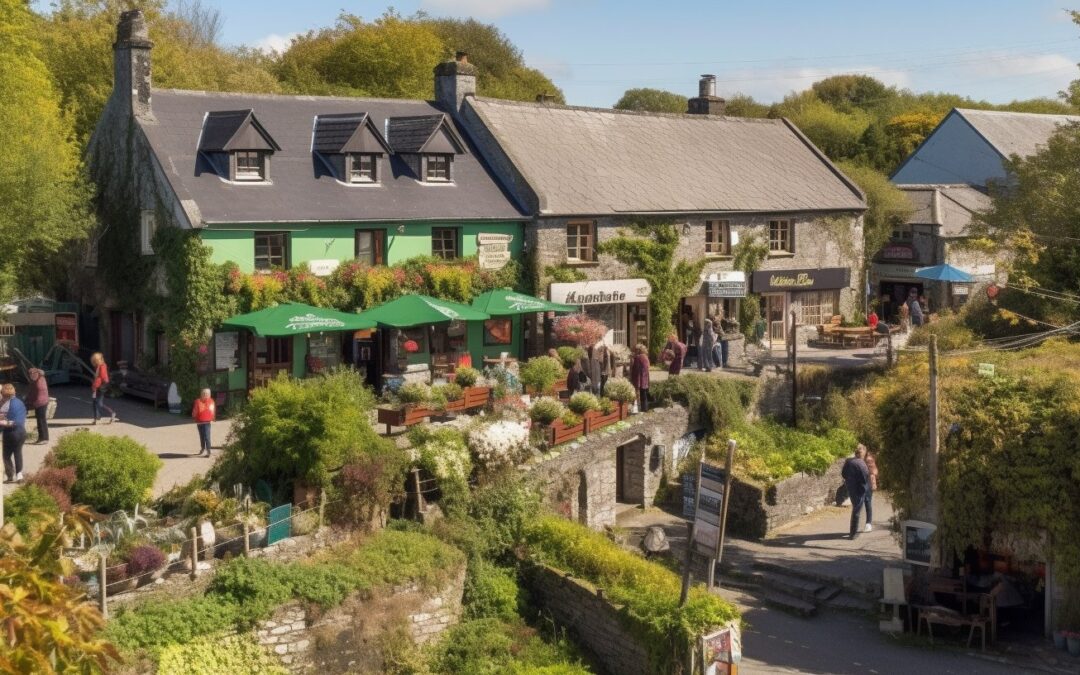Online shopping was already changing the local landscape even before the pandemic. As remote work changed our traffic patterns and where people were daily, the ecosystems in both cities and towns changed dramatically. Many city businesses revolved around the care and feeding of offices. Restaurants, bars, parking facilities, cleaning companies, etc. were suddenly without clients. Local businesses had similar challenges. People were shopping more online, local businesses couldn’t find staff to do the work.
We can’t just assume that the gaps that were created over the past few years will be filled in the same way. It’s going to be different and requires a fair amount of planning to continually adapt to the changing landscape.
We also want to create an environment where independent businesses can compete with chains. This requires a combination of strategies that foster entrepreneurship, support local economies, and address the challenges faced by small businesses.
Community Support and Engagement
Not everyone sees the impact that changing work and commuter patterns have on different businesses. All too often it’s when you see the for rent/sale sign go up, and at that point, it’s probably too late. A few months ago, my community lost a popular local business. The owners made the best of the economy and didn’t start letting people know they were in trouble until their utilities were shut off. Several people tried to help, but it was too late once they started looking for options.
All communities need to remember they are ecosystems and losing one business can impact others. We need to encourage communities to prioritize shopping locally and supporting independent businesses. This can be achieved through community events, local marketing campaigns, and education about the benefits of supporting independent businesses. While businesses don’t typically like to share detailed financials with their neighbors, there does seem to be some sharing of success or failure with companies that you might share customers with. It does take a village for many things.
Financial Assistance and Incentives
Communities also need to provide financial assistance, grants, or tax incentives to independent businesses to help them compete with chains. This could include low-interest loans, grants for business development or marketing, or tax breaks for locally-owned businesses. It’s not that communities are responsible for the success of their businesses, but it’s in their best interest to have a vibrant economy. This can be especially challenging for small communities. There are currently over 4000 ghost towns in the United States. Many small communities are headed in this direction. It can end up in a symbiotic relationship where the towns help keep the businesses alive, and they in turn keep the town alive. A lot of times it just takes doing things differently and being creative.
Regulatory Support
Communities need to Implement regulations that level the playing field for independent businesses, such as zoning laws that restrict the proliferation of chain stores or regulations that ensure fair competition in the marketplace. This can also include regulations for things like allowing short-term rentals like AirBnB. In general, it may be time to look at community regulations to see if any need updating. Near where we used to live, a town had an unusual regulation where you couldn’t eat in our car. It made things interesting for all the restaurants that had drive-throughs.
Access to Resources and Training
Local governments should offer resources and training programs to help independent businesses improve their operations, marketing, and customer service. This could include workshops, mentoring programs, or access to affordable business consulting services. The smaller the community the less likely these services are going to be available, but the more they are needed. It’s always a challenge.
Technology Adoption
Communities need to facilitate the adoption of technology among independent businesses to help them compete more effectively with chains. This could include providing access to affordable point-of-sale systems, online marketing tools, or e-commerce platforms. I frequently work with small businesses that need to implement technology to participate in government programs. It is a real challenge for some older business owners, especially if English isn’t their first language. Many times I end up working with their children who become their IT department by default.
Technology can have other community benefits as well. For about $300 in automation, many older seniors can stay independent in their homes longer. Children who might not be able to attend school because of illness or injury can still participate through online learning. This can also be a game changer for adults wanting to continue their education.
Collaboration and Networking
Collaboration and networking among independent businesses can help them leverage their collective strengths and resources. This could involve creating local business associations, networking events, or cooperative purchasing agreements. Most smaller communities don’t have chambers of commerce or similar organizations. Sometimes it just takes some organization to have regular communication about business issues. Set up a rotating meeting at different businesses to discuss common topics. A rising tide lifts all boats.
Emphasize Unique Selling Propositions
Independent businesses need to focus on their unique selling propositions, such as personalized service, locally sourced products, or niche offerings that differentiate them from chain stores. Instilling a sense of connection with the community is important too. A local business can also become a source of community pride if it’s unique and brings people from outside the area to enjoy what it has to offer. These businesses can become a hub to draw visitors, that other businesses can complement.
Community Ownership Models
Community ownership models, such as cooperatives or community-supported enterprises are also something small communities should explore. This allows residents to have a stake in the success of independent businesses. This is pretty common in agricultural projects, but there are commercial models as well. The latter tends to be more complicated but they have worked well in both urban and rural communities.
Promotion of Local Products and Services
It’s important to promote local products and services through initiatives such as farmers’ markets, craft fairs, or local product showcases, to encourage consumers to support independent businesses. While there might not always be private spaces for these events, usually there are municipal or community spaces that can be rented cheaply or used free of charge. Various unique partnerships can be explored. We have a local restaurant, an ice cream shop, and a local automotive repair shop that display local artist’s works. If you see something you like, they can ring it up with whatever else you are buying. Having a market that sells local produce is always nice. As a kid, I sold walnuts at a local general store.
Public Awareness Campaigns
It’s really easy to default to Amazon.com for most of your shopping. People tend to forget about their local economy and what its impact is on their quality of life in their community. Occasionally they need reminders. Communities should launch public awareness campaigns to educate consumers about the benefits of shopping locally and supporting independent businesses, including the positive impacts on the local economy, environment, and community cohesion.
By implementing these strategies, communities can create an environment where independent businesses have a better chance to thrive and compete with chain stores. By supporting local businesses you also help preserve the identity of your community and establish connections that can last generations.



